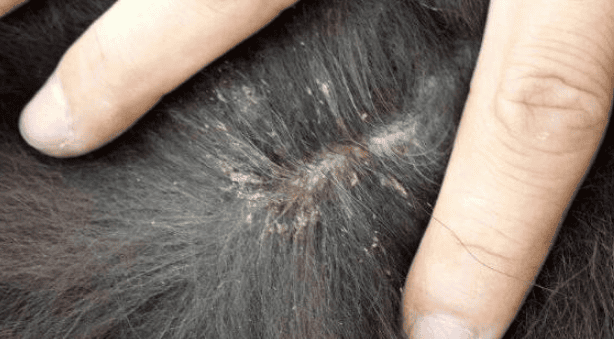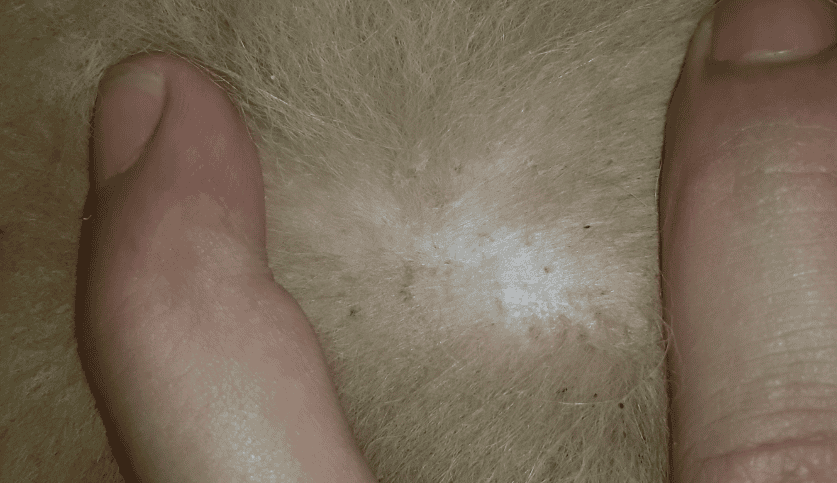Lice, once a well-known parasite, has now gradually faded out of people’s sight. They often live in pets' hair and are especially common around the ears, neck, shoulders and anus.
Because it is large and visible to the naked eye, it is relatively easy to diagnose. However, in the era of economic backwardness, lice were a common pest. Nowadays, with the improvement of the quality of life and the improvement of hygiene conditions, lice have almost disappeared. For many people born in the 90s and 2000s, they have never even seen them. But please note that lice are not completely extinct and may still hide in certain corners, such as in crowded places such as schools or kindergartens. Therefore, we still need to remain vigilant to prevent another lice outbreak.
How do lice infect furry children?

Lice are mainly spread through direct contact. For example, cats or dogs come into contact with parasitic lice. When other animals have hair, they may be infected. It is worth noting that lice are specific in their choice of host. For example, human lice only parasitize humans, dog lice only parasitize dogs, and cat lice only parasitize felines. Therefore, it is very rare for pets to transmit lice to each other. Because of this route of transmission, lice are common among animals that live in groups, especially in places like pet shelters and kennels.
The dangers of lice
Lice are common parasites that bite their hosts and suck their blood. This parasite will cause itchy skin to the host. If effective treatment is not carried out for a long time, it may even cause severe anemia, or even shock and death of the puppy.
After being infected with lice, pets will experience persistent itching, causing them to scratch frequently. As a result of constant scratching, the hair can become dry, fluffy, or even fall out. Areas of hair loss are common in areas such as the ears, neck, shoulders, groin, and perianal area. In addition, puppies infected with lice may also develop symptoms of anemia, which requires special attention. In order to avoid these symptoms, it is very necessary to take preventive and treatment measures in time. Grooming your pet frequently, maintaining environmental hygiene, getting regular physical exams, and deworming are all effective ways to prevent and treat lice infestations.

Diagnosis of lice infection
The diagnosis of lice is quite intuitive and easy to detect. No complicated instrumentation is required. As long as we observe carefully with the naked eye, we can find adult lice or eggs hidden in the hair. Once these tiny creatures are discovered, it is certain that an individual is infested with lice. Although these lice are called insects, their body structure is different from the insects we are familiar with. Their bodies are flat, with only six legs and vestigial wings. What's more noteworthy is that lice eggs will attach tightly to the hair, forming white flakes that sometimes look like dandruff. Therefore, careful observation of an individual's hair is key to early detection of lice infestations.
Treatment of lice infestation
Being infested with lice is not something to be afraid of as there are many effective insecticides available. To quickly remove lice from your pet, we usually choose a shampoo that contains specific insecticidal ingredients. These ingredients, like fipronil or selamycin, have been widely proven to be extremely effective against lice. But it is important to continue using it for a period of time to ensure complete removal. Generally speaking, the desired effect can be achieved by using it twice a week for three to four times in a row. In more severe cases, it may be necessary to use it four times a week. In addition, not only should you pay attention to the immediate cleaning of your pet, but the environment and items around it cannot be ignored. Bedding, pet toys, etc. all need to be cleaned thoroughly. If something cannot be washed, it can be stored in a sealed bag for a few weeks to kill any lice or eggs that may be present. During treatment, it is sometimes necessary to shave the infected area to ensure effectiveness. This not only allows you to observe the treatment effect more intuitively, but also removes lice more thoroughly.
How to prevent?
In order to prevent lice from spreading in kennels, pet shelters and other places, we recommend regular insecticide measures. For domestic pets, it is equally important to keep pet supplies clean and hygienic. Frequent replacement and cleaning of bedding and other supplies is essential. In most cases, the home environment does not require routine disinfection with pesticides, but if a serious lice infestation problem occurs, large-scale environmental disinfection is necessary to protect the health of your family.

 扫一扫微信交流
扫一扫微信交流
发布评论